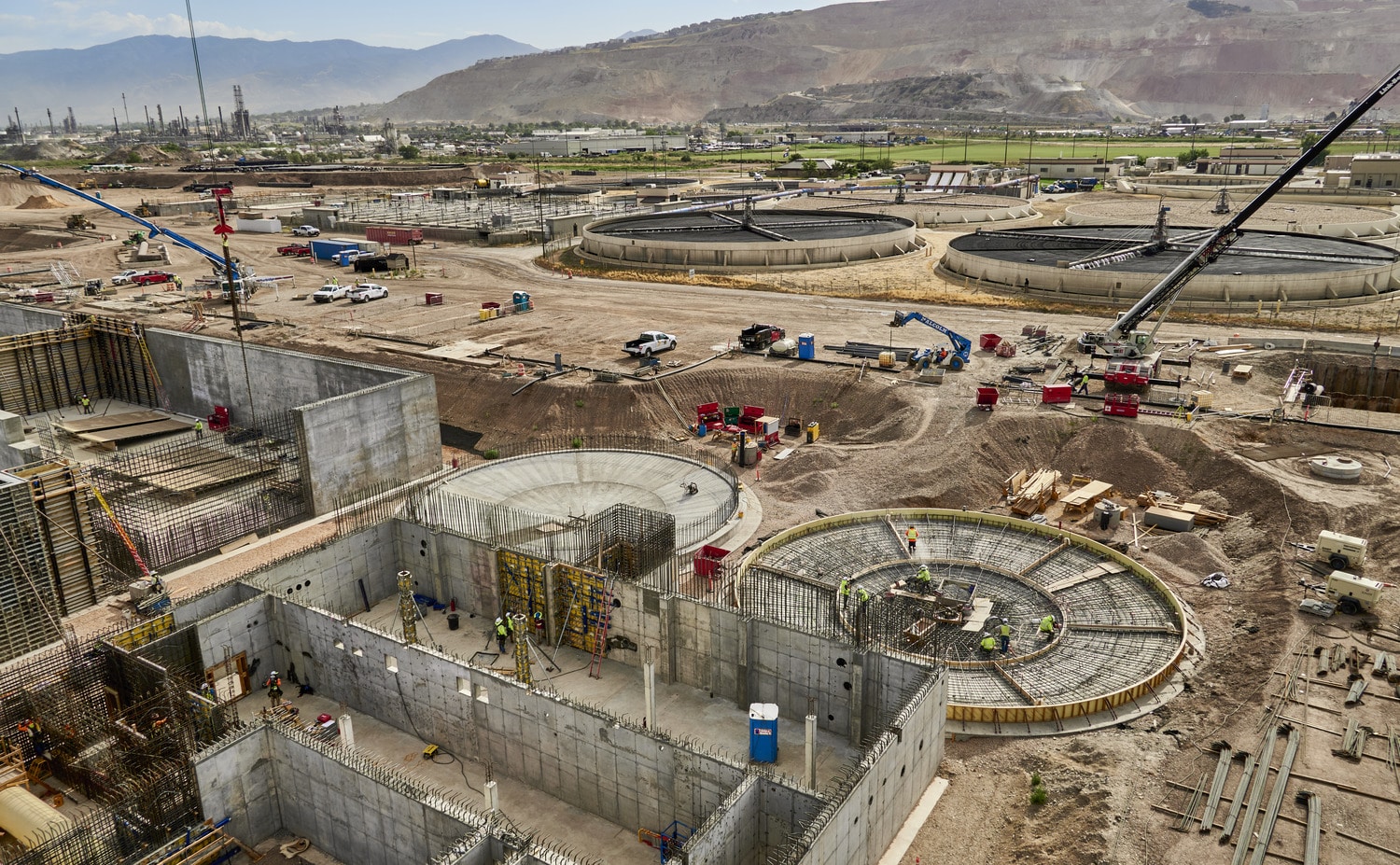
The Salt Lake City Water Reclamation Facility (SLCWRF) currently treats 33 million gallons per day of wastewater. But it’s the only wastewater treatment plant in the city, and after 55 years, it’s beginning to show signs of age. With our extensive résumé of water treatment work and expansive self-perform capabilities, Sundt was chosen alongside joint venture partner PCL Construction and partners AECOM and Jacobs Engineering Group to renovate the outdated structures and construct new facilities to support the area’s growing population. The Salt Lake City New Water Reclamation Facility will add new processes that will provide biological nutrient removal, improve efficiencies, reduce odors, improve discharge water quality and increase capacity.
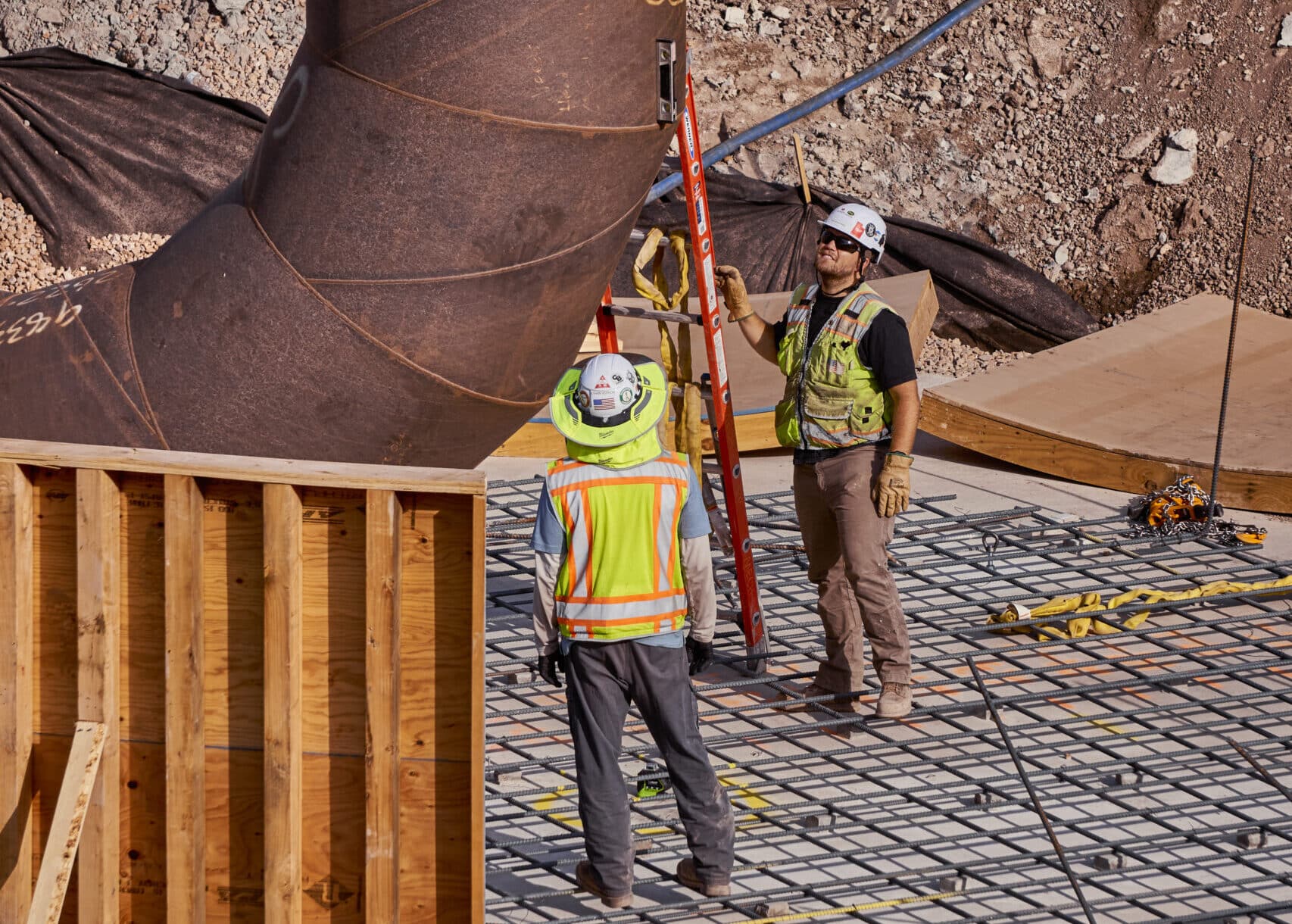
Two contractors, one cohesive team
SLCWRF is a $750 million project with a massive scope of work, and Sundt and PCL are tackling this huge undertaking as a team. The project currently staffs a JV crew of over 250 craft professionals, and the number is likely to climb near 400 as the final push to completion gets underway. When integrating crews from two major contractors there is always the potential for a culture clash – but the crews blended so effortlessly that it’s easy to forget who works for Sundt and who works for PCL. They have even formed after-hours soccer, basketball and disc golf teams.
“From the beginning, we paired a Sundt employee with a PCL employee to integrate the crews as quickly as possible,” said Karthik Reddy Alugubelly, project manager and estimator overseeing all concrete work on site. “At SLCWRF, some of the field personnel are from Sundt but led by PCL superintendents, and PCL’s field management skills and knowledge have been invaluable. Sundt has brought our top project management and admin capabilities to the table. Both Sundt and PCL bring a wealth of experience and knowledge from our individual résumés of water and wastewater projects, so as a joint venture we’re one of the most skilled teams in the industry.”
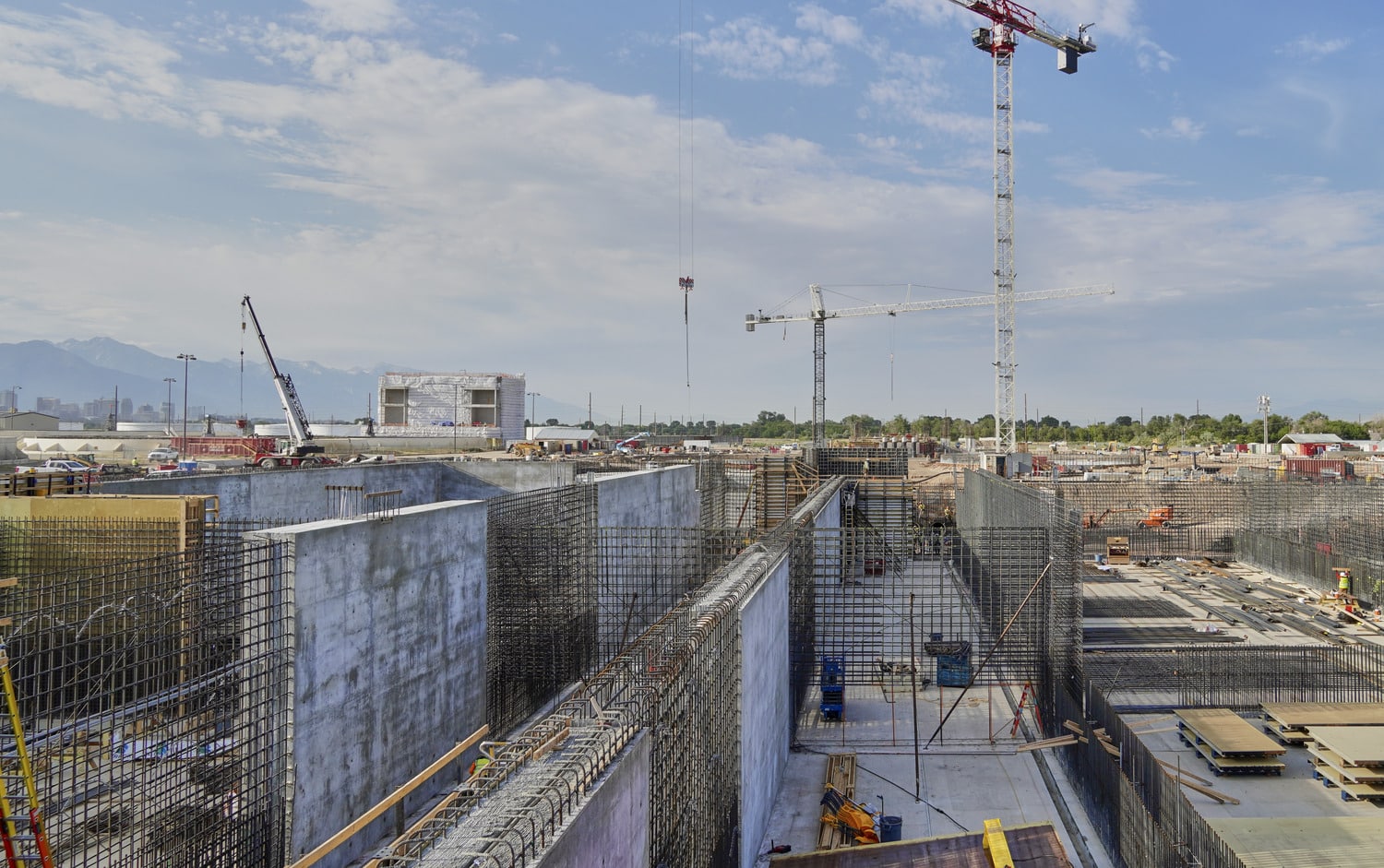
Feats in concrete
Concrete work makes up almost a quarter of the project’s scope, totaling over $100 million. In August 2023, the team achieved 50% of the entire concrete scope on the job. As of October, the team placed 60,000 cubic yards of the 95,000 cubic yard total requirement for all the structures.
“The overall quality of the concrete placement work installed by the Sundt/PCL JV team has been excellent here at the WRF,” said Program Construction Manager with Jacobs, David Tait. “In particular, on our BNR facility, the team has been placing high quality concrete slabs and walls at a very high rate. This work is critical to support our aggressive project schedule for this important project for the city of Salt Lake.”
This impressive achievement didn’t come easily. For the biological nutrient removal (BNR) facility, the team must erect 120 walls, 42 inches wide and up to 24 feet in height. Each wall requires anywhere from six to 10 hours of work to place and finish. The entire facility sits in an earthquake zone, so reinforcing all concrete work with rebar was a necessary but tedious process. The team had to use pea gravel in the concrete mix in some areas to get the right consolidation.
Weather conditions played a huge role, with Salt Lake City experiencing record-breaking snowfall in winter and temperatures exceeding 100 degrees in the summer. Thousands of gallons of propane had to be used to heat the ground, rebar, concrete and keep all tools and equipment functioning through the bitter chill of winter. During summertime, the region’s uncharacteristically intense heat posed unexpected challenges for concrete pours. For projects in the Southwest, it’s not uncommon to use mass quantities of ice to chill concrete drums to keep the mix at optimal temperature. But for ready-mix suppliers in Salt Lake who are used to the more temperate summers of Salt Lake City, this was a new practice. But Sundt and PCL’s experience in warmer states helped guide the suppliers to achieve a high level of quality.
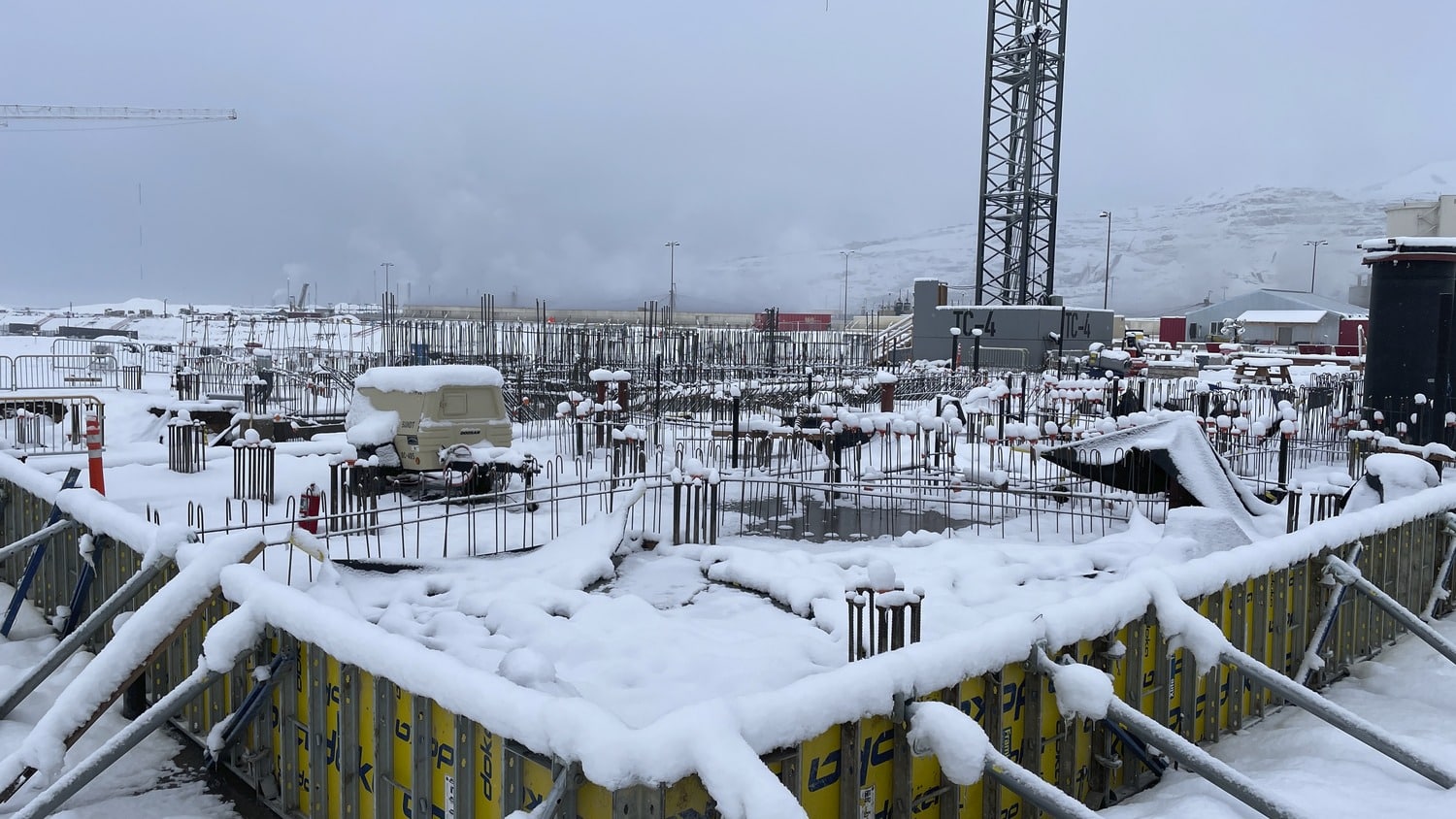
A case study in innovation
The project team at SLCWRF hasn’t been afraid to break from tradition to explore alternative methods of construction. So far, they’ve paid off big time.
The soil conditions at the old plant were not suitable for construction, and for a project this size, the cost of placing steel piles under the structures to stabilize the facility would have been excessive. The team came up with the idea to surcharge the site with a load equivalent to that of the facility on the soil to achieve the initial settlement. The only problem was that surcharge usually takes two to three years as the earth needs time to settle under the load.
Facing the challenge head-on, the Sundt/PCL team once more employed their inventive approach, successfully devising a brilliant solution: wick drains. Wick drains are a unique prefabricated vertical drain technology with an absorbent material core that provides a pathway for water to seep to the top and get pumped out of the soft soil which allows it to consolidate at a much quicker rate. Subcontractor crews drilled approximately 1,000 miles worth of wick drains into the soil across the site. After only eight months of continuously pumping water out of these drains, the entire surface of the site had been lowered by six feet. Despite the curveballs, there hasn’t been a single challenge that the Sundt/PCL team couldn’t overcome with a little brainpower and grit.
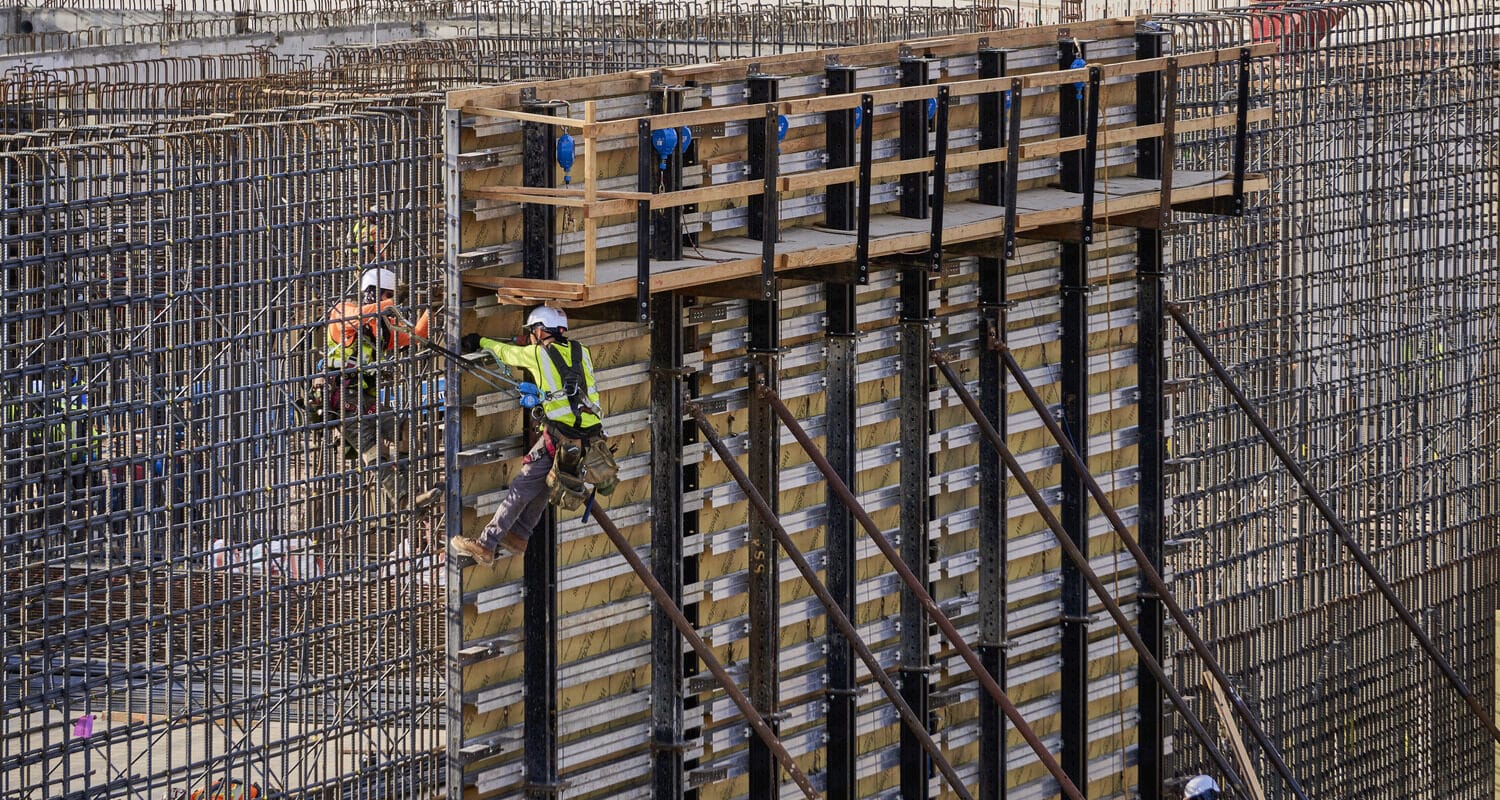
A stand-out project from a stand-up team
In addition to the impressive technical work the team has pulled off, the project has accomplished a number of notable sustainability goals, including salvaging and recycling over 99% of waste material. In concrete alone, they’ve been able to salvage almost 58,000 tons of crushed concrete and repurpose it to build access roads and equipment laydown areas. Additionally, over 600 tons of rebar was diverted to a salvage facility.
“The Sundt/PCL team, along with our other partners, AECOM and Jacobs, have tirelessly worked together to ensure a successful project,” said Deputy Director of the Salt Lake City Department of Public Utilities Jason Brown. “The construction environment has seen unprecedented changes in almost every aspect. The broad expertise and resources of the Sundt/PCL joint venture have helped to keep this project on track.”
The team has surpassed the halfway point, but the work is far from over. With the site work and flat work done, the team will tackle the major structural work over the next two years. The Salt Lake City Water Reclamation Facility is slated to wrap up in late 2026.